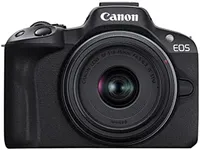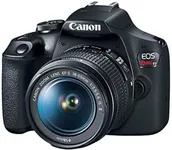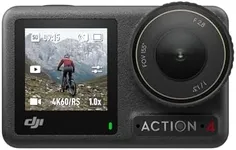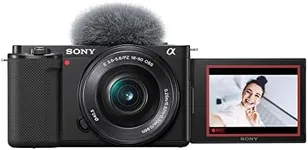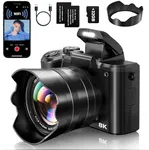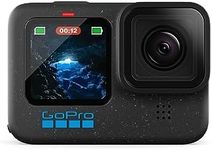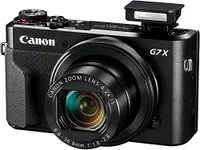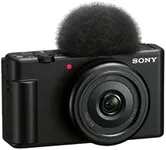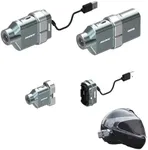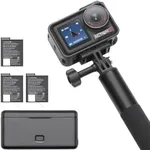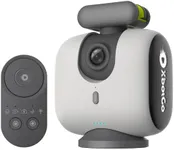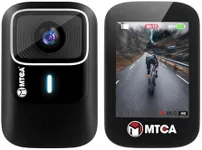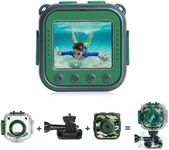Buying Guide for the Best Vlog Cameras
Choosing the right vlog camera can significantly enhance the quality of your content and make your vlogging experience more enjoyable. When selecting a vlog camera, it's important to consider various specifications that will impact the performance and suitability of the camera for your specific needs. Understanding these key specs will help you make an informed decision and ensure that you get the best camera for your vlogging style.ResolutionResolution refers to the number of pixels that the camera can capture in an image or video. Higher resolution means more detail and clarity. For vlogging, a resolution of at least 1080p (Full HD) is recommended, but 4K resolution is becoming increasingly popular for its superior quality. If you plan to create highly detailed content or future-proof your videos, consider a 4K camera. However, if you are just starting out or primarily sharing on platforms where 1080p is sufficient, a Full HD camera will work well.
Sensor SizeThe sensor size of a camera affects the image quality, especially in low light conditions. Larger sensors capture more light, resulting in better image quality and less noise. Common sensor sizes include Full Frame, APS-C, and Micro Four Thirds. Full Frame sensors offer the best quality but are usually found in more expensive cameras. APS-C sensors provide a good balance between quality and cost, making them a popular choice for vloggers. Micro Four Thirds sensors are smaller but still offer decent quality and are often found in more compact cameras. Choose a sensor size based on your need for image quality and portability.
AutofocusAutofocus is the camera's ability to automatically focus on a subject. For vlogging, reliable and fast autofocus is crucial, especially if you move around a lot or film yourself. Look for cameras with advanced autofocus systems, such as those with face and eye detection, which ensure that you stay in focus even when you move. If you plan to film dynamic content or frequently change your position, prioritize a camera with excellent autofocus performance.
StabilizationStabilization helps reduce camera shake and produce smoother videos, which is particularly important for handheld vlogging. There are two types of stabilization: optical (in-lens) and electronic (in-camera). Optical stabilization is generally more effective but can be more expensive. Electronic stabilization can also work well, especially when combined with optical stabilization. If you plan to vlog while walking or moving, a camera with good stabilization will help you achieve professional-looking footage.
Audio QualityGood audio quality is essential for vlogging, as poor sound can detract from your content. Built-in microphones on cameras are often not sufficient, so look for a camera with an external microphone input. This allows you to use higher-quality microphones for better sound. Additionally, some cameras have features like wind noise reduction and audio level controls, which can further enhance audio quality. If clear and professional audio is important for your vlogs, prioritize a camera with these audio features.
PortabilityPortability refers to the size and weight of the camera, which can affect how easy it is to carry and use. For vlogging, a lightweight and compact camera is often preferred, as it is easier to handle and less tiring to use for extended periods. However, smaller cameras may have fewer features or lower image quality. Consider how often you will be traveling or filming on the go, and choose a camera that balances portability with the features you need.
Battery LifeBattery life determines how long you can use the camera before needing to recharge or replace the battery. For vlogging, longer battery life is beneficial, especially if you plan to film for extended periods or in locations where recharging is not convenient. Look for cameras with good battery performance and consider carrying spare batteries if needed. If you often vlog on the go or during long sessions, prioritize a camera with a longer battery life.
ConnectivityConnectivity options, such as Wi-Fi, Bluetooth, and USB, allow you to easily transfer videos to your computer or smartphone for editing and sharing. Some cameras also offer live streaming capabilities, which can be a great feature for vloggers who want to broadcast in real-time. Consider how you plan to use and share your content, and choose a camera with the connectivity features that will make your workflow more efficient.

